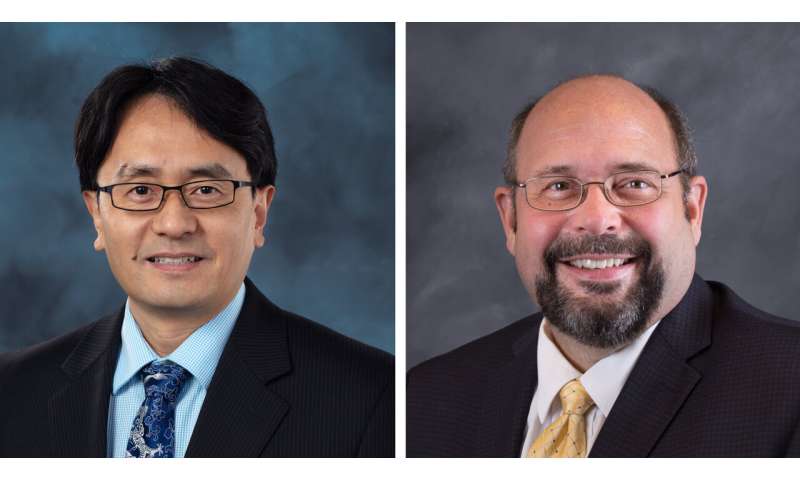ORNL's An, Herwig named Neutron Scattering Society of America Fellows

The Neutron Scattering Society of America, or NSSA, recognized Oak Ridge National Laboratory's Ke An and Ken Herwig as fellows for their outstanding contributions to neutron scattering.
The NSSA recognized An for sustained contributions in the development and application of neutron diffraction to the understanding of structure and properties of engineering materials and Herwig for sustained leadership and exceptional contributions to the development of world-class neutron scattering instrumentation.
Formed in 1992, NSSA invites professionals from a broad spectrum of disciplines who have an interest in neutron scattering research. The purpose of the organization is to support neutron scattering by promoting its use, community building, educational activities and other related activities. Every other year, the organization recognizes members who make significant contributions to neutron scattering. Neutron scattering research provides information across a wide range of fields including biology, materials and energy sciences, physics, engineering and chemistry. Scientists use scattering to glean details about the nature of materials ranging from liquid crystals to superconducting ceramics, from proteins to plastics and from metals to metallic glass magnets.
"We are very proud of these recognitions. Ke and Ken join a host of their ORNL colleagues as NSSA Fellows, which further exemplifies the caliber of marvelous talent that drives our leading edge as a discovery powerhouse in neutron science," said Jens Dilling, associate lab director for ORNL's Neutron Sciences Directorate.
An is a distinguished R&D staff and instrument scientist at the versatile materials science and engineering diffractometer, or VULCAN. VULCAN is one of 20 instruments at ORNL's Spallation Neutron Source, or SNS.
"Ke's work on VULCAN sets an outstanding example. I am very happy to see this well-deserved recognition and extremely pleased to have him on our team," said Volker Urban, section head for Large Scale Structures at ORNL. NSSA named Urban as a fellow in 2022.
As the first instrument scientist hired at SNS, Herwig built its first instrument, BASIS, a backscattering spectrometer. He now serves as the technical director for ORNL's Second Target Station, or STS project.
"Over the years, I've watched Ken's unwavering dedication and passion for SNS and now for the STS Project. This passion has culminated into key achievements for both projects and helped instill a positive atmosphere for mentorship, which is essential to the long-term success of neutron scattering at ORNL," said Graeme Murdoch, Director of ORNL's Second Target Station Project.
The SNS provides the most intense, pulsed accelerator-based neutron beams in the world, while ORNL's High Flux Isotope Reactor provides the highest flux reactor-based source of neutrons for research in the US and provides one of the highest steady-state thermal and cold neutron fluxes of any research reactor in the world. The capabilities of the STS will complement those of HFIR and First Target Station at SNS. Combined, these three facilities form a matchless combination that will maintain US global leadership in neutron science capabilities.
"Innovation simply cannot be sustained without the right people—especially in an organization of this size," said Jon Taylor, director of the Neutron Scattering Division at ORNL. "It is an honor to work with such an incredible pool of talent and I am very proud of these accomplishments, each and every one."
UT-Battelle manages ORNL for DOE's Office of Science, the single largest supporter of basic research in the physical sciences in the United States. The Office of Science is working to address some of the most pressing challenges of our time. For more information, please visit https://energy.gov/science—Sumner Brown Gibbs
Provided by Oak Ridge National Laboratory